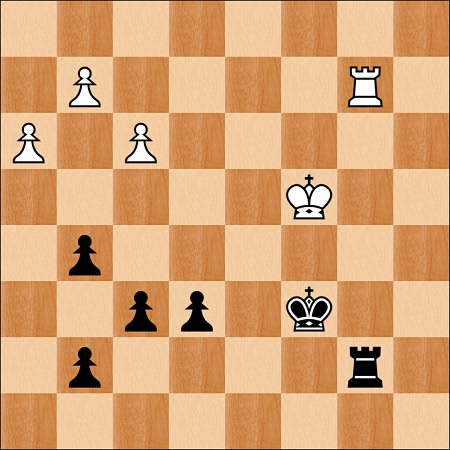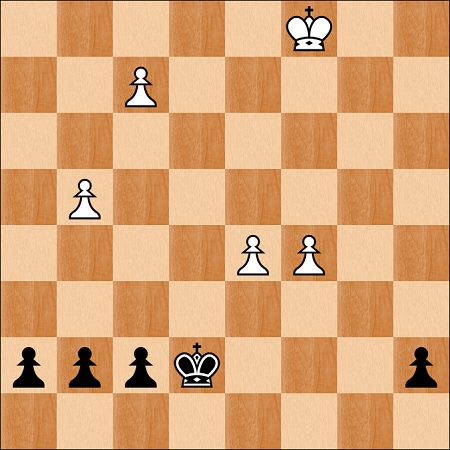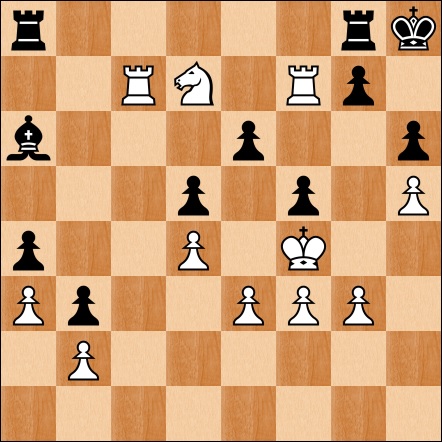I just posted the latest clinic on endgames which members can find here. As usual I should stress the importance of this part of the game which can benefit a player's chess as a whole by offering a safe and logical way to convert advantages as well as develop what I would term micro-patterns. My own chess improved a lot when I devoted more time to the endgame in the 1990s. It is also one of the main things that I have studied with my son Sam.
Sam has two of his games in this clinic with the first of them showing how the endgame is neglected at club level. In the Preston Congress he reached the following position as Black having just captured the pawn on b7:

One maxim states that all rook endgames are drawn, which while not being true certainly indicates the drawish nature of rook endgames even one or two pawns down. Yet instead of keeping his rook on the board White exchanged with 44.Rxb7?? which leaves him with a completely lost pawn endgame. The game concluded with the moves 44... Kxb7 45.Kb5 Kc7 46.Kc5 Kd7 47.g3 f5 48.h4 gxh4 49.gxh4 g6 50.f4 Kc7 51.Kc4 Kc6 52.Kd4 Kd6 0-1.
How should someone go about studying the endgame? Well Tiger Chess just happens to have a 160 lesson endgame course that covers both technical endgames and endgame strategy, plus there are downloads which help practicing different positions against the computer. You need to join to access it or course...
Nigel Davies




